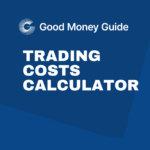CFD trading platforms have three potential sources of income, trading revenue (commissions or spreads), financing charges and the b-book.
Trading Revenue
It’s common for a broker to charge a commission or widen the spread around the market. If a broker offers DMA, CFD trading commission will be added post-trade, otherwise, CFD commission will be built into the spread around the underlying market bid/offers.
Financing Charges
CFD positions are held open overnight then a financing charge is applied and is typically set at a percentage above and below an interest rate benchmark. For example, funding might be set at + or – 2.50% over LIBOR. The mark-up over the benchmark creates another source or venue for the CFD broker. CFD traders pay to fund long positions overnight, and when interest rates are normalised, they can receive funding on their short positions. However, with interest rates at close to or even below zero, that tends not to be the case.
B-Book
When you open a CFD position, your CFD broker takes the opposite or opposing side of the trade. Some choose to hedge that position in the market, other don’t So, for example, if you choose to open a long (buy) position on 5,000 shares of ABC Inc. at $10.00 per share, your broker will incur a short position in 5,000 shares of ABC Inc. at $10.00 per share.
You and your broker are the counterparties to the CFD trade. The profit and loss, or exchange of cash flows in the trade, will be between those two counterparties and no one else.
If the broker opposes its client’s positions and does not hedge that exposure then the broker’s trading P&L will be the inverse of its clients, such that it will make money if they lose and lose if they profit. Whether the broker hedges its position or opposes them is a commercial decision. However, if we assume that brokers hedge, then having written a CFD to their client, the broker now has an equal and opposite position to them – shorts to their longs and longs to their shorts. In our hedged example, the broker will enter the exchange-traded market and trade against their position by selling stock against a long position (a client short position) or buying stock against a short (a client long position). If the broker purely acts as an agent however, then they will not hedge against a client’s short position in this way. Rather, they will sell stock in the market and borrow the stock from a third party, for a fee, to make delivery/settlement of the physical stock. If a stock is in demand, then additional fees may be incurred in borrowing the stock, and these may be passed on to the end client.

Richard is the founder of the Good Money Guide (formerly Good Broker Guide), one of the original investment comparison sites established in 2015. With a career spanning two decades as a broker, he brings extensive expertise and knowledge to the financial landscape.
Having worked as a broker at Investors Intelligence and a multi-asset derivatives broker at MF Global (Man Financial), Richard has acquired substantial experience in the industry. His career began as a private client stockbroker at Walker Crips and Phillip Securities (now King and Shaxson), following internships on the NYMEX oil trading floor in New York and London IPE in 2001 and 2000.
Richard’s contributions and expertise have been recognized by respected publications such as The Sunday Times, BusinessInsider, Yahoo Finance, BusinessNews.org.uk, Master Investor, Wealth Briefing, iNews, and The FT, among many others.
Under Richard’s leadership, the Good Money Guide has evolved into a valuable destination for comprehensive information and expert guidance, specialising in trading, investment, and currency exchange. His commitment to delivering high-quality insights has solidified the Good Money Guide’s standing as a well-respected resource for both customers and industry colleagues.
To contact Richard, please ask a question in our financial discussion forum.


